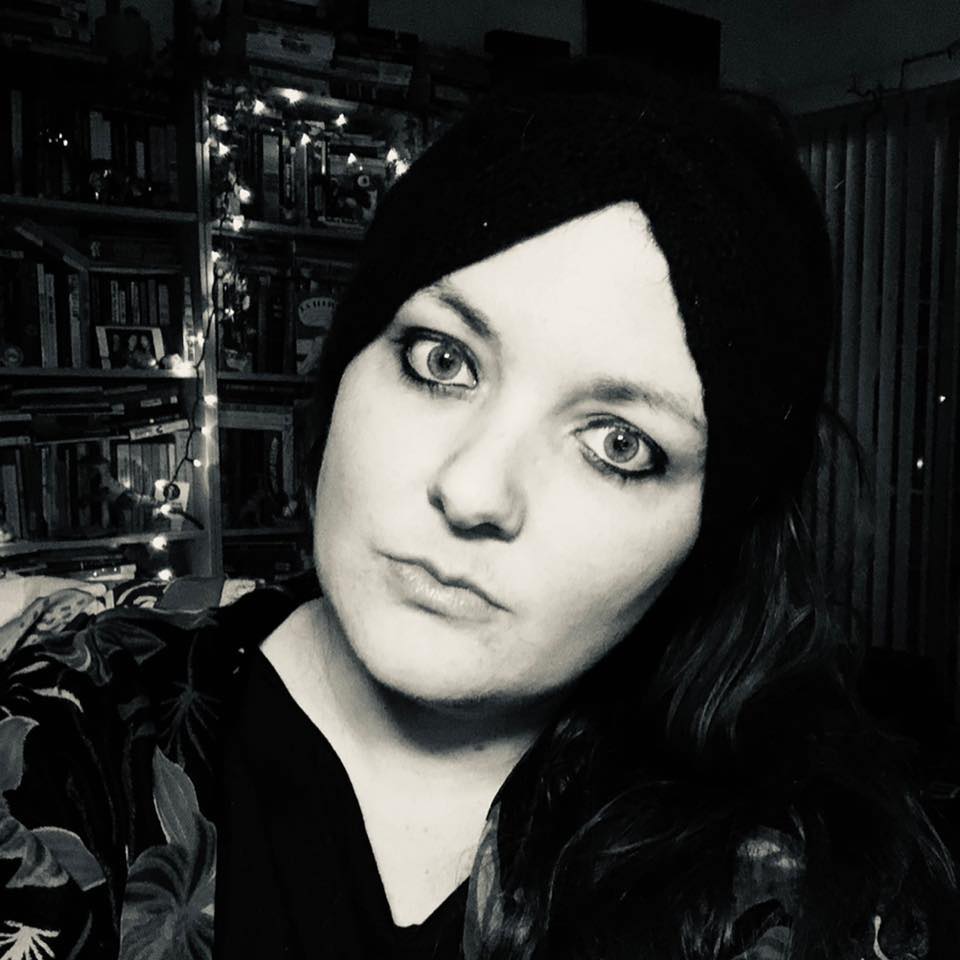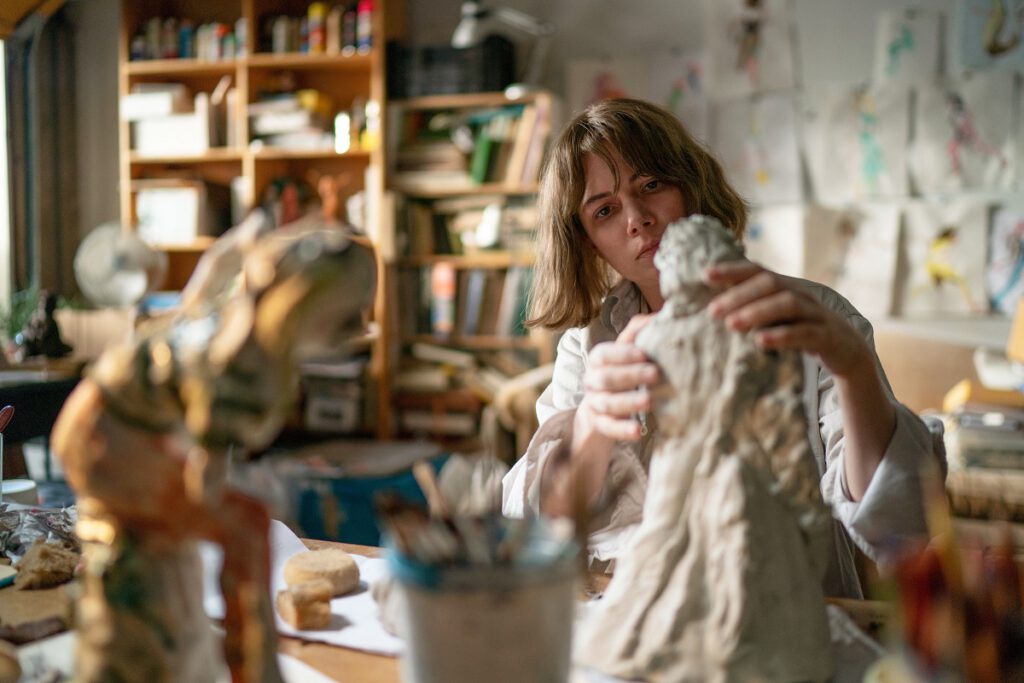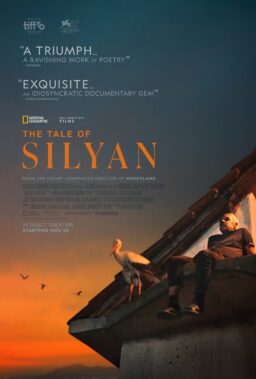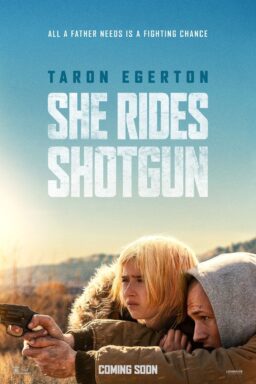Since her debut film “River of Grass” in 1994, writer/director Kelly Reichardt has crafted a singular body of work that proves her to be one of the most distinct voices in American cinema. Reichardt’s films have been described as “minimalist” and tend to explore rural areas and people on society’s margins. She has described her films as “glimpses of people passing through.”
Born in Miami, Florida, Reichardt studied photography, receiving an MFA from the School of the Museum of Fine Arts in Boston. Although her first feature debuted at the Sundance Film Festival and received three Independent Spirit Awards nominations, it would be another five years before she could finance another feature film.
After Reichardt met writer Jon Raymond through a mutual friend, she adapted one of his short stories into her breakout film “Old Joy.” Her next film, “Wendy and Lucy” was also based on a story by Raymond, who co-wrote the screenplay. This would mark her first time working with actress Michelle Williams, a partnership that has become a fruitful and much beloved actor-director pairing. “Showing Up” is Reichardt’s sixth collaboration with Raymond and her fourth collaboration with Williams.
Yet, although “Showing Up” is set in Portland, where many of her previous films have taken place, the film has a distinct comical flair as she paints a loving portrait of the city’s art world. Williams plays Lizzy, a sculptor preparing for an upcoming show. Unfortunately, her chaotic personal life often impedes her ability to concentrate on her work. Her menial administrative job at her old art college offers little artistic satisfaction. Her friend, landlord, and fellow artist Jo (Hong Chau) is also preparing for two shows and thus is neglecting her broken hot water. Her very divorced parents (Maryann Plunkett, Judd Hirsh) – also artists – can’t be in a room together without bickering. And her brother Sean (John Magaro) is either having a breakdown or getting into “earthwork.”
“Showing Up” is a wry character study full of Reichardt’s trademark attention to detail and brought to life by exquisitely lived-in performances from the entire cast, but primarily through the complicated relationship between Lizzy and Jo as portrayed by Williams and Chau.
For this month’s Female Filmmakers in Focus column, RogerEbert.com spoke to Reichardt about capturing the authentic feel of Portland, her long-time collaborators Jon Raymond and Michelle Williams, working with Hong Chau for the first time, and the art of filming artists at work.
I read that Janet Weiss [from Sleater-Kinney] did the location scouting.
Yes, she did.
I loved how it felt very realistically about Portland. But also you had this beautiful soundscape. What was your process in capturing this authentic feeling of Portland?
We wrote the script around the school, which is the Oregon College of Arts and Crafts, which got shuttered right before we filmed in it. It’s a beloved institution. Over 110 years old. It had some different locations. But it’s been at this location since maybe the late ’70s, early ’80s. Great spot, really sad that it was leaving. It was a big deal for the ceramics community for decades. It was an empty school, and we wrote the script for it hoping somehow we’d be able to use it. When the pandemic shut it down they let us use the school, basically. And the apartments where Lizzy and Jo live, those are our friends. We know everybody that lives on that street and our friends built those apartments for their artists friends at a time. Everyone’s lived in those apartments at some moment. Janet is not only a brilliant drummer, but she’s an amazing locations person. And I love that if you write that because locations people get no credit.t
And locations are so important.
And she killed it. She’s great. A highway loops around the school, so it’s not great for sound. It was like the downside of the location was the sound. And I guess, [cinematographer] Christopher Blauvelt would say, it has these great tin roofs, which I loved. But I didn’t think about how in July, the sun would just bounce off them and reflect back at you. So he really hated those roofs. Sound had to be built later. I live in Portland, so it’s easy to know what the soundscape is there. Which is basically like skateboards and crows, skateboards and crows. Those are the main things you hear in the world. In the film, when we’re there in the backyard hanging the tire, that is on a corner and it’s just so loud. It was killing us. So you clean all of that out and then you recreate and go “make it on a loud corner.” That’s how filmmaking goes.
Part of the soundscape when we were shooting was André Benjamin just walking around playing his flute whenever he wasn’t on camera, which became sort of the background, the distant background sound. On our last day at the school, he allowed us to record him and that was great. So we just stood out in the field, and we recorded him. So all the bird sounds, it all was out there with his flute.

You’ve collaborated with screenwriter Jon Raymond, actors Michelle Williams and James Le Gros, and now John Magaro several times. I would love to hear if you feel like when you collaborate with someone multiple times, does that help you experiment more as an artist? What is that experience like?
Well, with Michelle, I would say yes. With Jon, I don’t know, it’s hard for me to judge anything with Jon, because we’re very close friends. We talk every day, and life is too entangled with making films. So I don’t know, as far as experimenting. I know that each film has felt really different. And then maybe not. And then in the end, I’m like, “Oh, well, is it any different?” We don’t know. But we were definitely changing the tone on this one. And we wanted it to bring more humor into it. So that was different.
I’ve worked with a lot of actors over and over again, but it’s really nice to have John Magaro back again. James Le Gros kind of got ripped off in this one. I gotta admit. I was like, “Just come out. We’ll make something.’
I’m always happy to see him on screen. That’s how I feel about it. He’s one of the great unsung actors in America.
I agree. Wow. I agree with you completely. He really is. There’s so many characters, so I said “I’ll figure out what this character is when you get here.” And then I never really figured it out.
He does have some of the funniest lines.
I know. He’s great.
If you need someone for like two lines. He’s your guy. He’ll nail it every time.
By the way, he doesn’t think that that’s the thing to do, to call him in for two lines.
Ah, well, I appreciated it.
I’ll tell him you said that.
I’d love to talk a bit about Lizzy and Jo’s relationship. I thought it was really fascinating how, in some moments Lizzy is really almost comparing herself to Jo and in other moments, she’s just in awe of her as a fellow artist. That felt very real.
I think Lizzy has a lot of confidence in her work but doesn’t have that easier time in life. I think she’s also an admirer of Jo’s work. I think their admiration for each other’s work flows both ways. So that helps keep them connected. But Lizzy can’t have Jo’s life. She just doesn’t have the setup for it. And she doesn’t have the personality. All the A-brainers of the world would love to be, you know, the B-brain people. The B-brains win, let’s face it. Life is easier, I think. It’s a complicated relationship, as friendships can be. Especially if one holds a little bit more power in the setup. So Lizzy gets exposed to people talking about Jo’s work and enjoying Jo’s work, and it’s prickly.
How did you end up casting Hong Chau for the role of Jo? She’s had quite a great few years.
I know. She’s great. I’m sure [casting director] Gail Keller, who I was working with, turned me on to Hong Chau. So that was a lucky thing. At first, I asked her to play the part of the visiting artist, and she was like, I want to be Jo. And I thought “Wait, what will that be like? If she was Jo?” So we thought about it and thought it could be great. Then she met Michelle Segre, whose art is in the movie, and she was not intimidated by that work and what it took to make that work. She had no moment of intimidation. She was just all in and, like, just went to work. Figuring it out, but with pleasure. Which was very Jo-like. I think it would be such a different film if it wasn’t her in that role. It’s a really great thing.

They definitely bring two different kinds of energy. I think there’s sometimes a set idea of what an artist is, and this movie really shows that there is no one way to be an artist, no one way to express yourself.
Yeah, they’re really different. Jo is physically at home in her body and we thought of her more almost like she’s an athlete artist. I guess everyone’s figured out by now how great she is.
This film is also a lot about the sort of other side of academia, which is the paperwork. What was the inspiration behind showing that aspect of the school?
The job that Lizzy has was inspired by a writer friend of mine, Mimi Lipson. She did that sort of job in the film department at Bard for a year, or maybe she did it for two years. She’s a writer. What was she doing that job for? She needed the money. She’s a hilarious person and pretty no-nonsense, so she was not necessarily happy in that job. But it was selfishly great for us that she was in that job. I wouldn’t even probably know her otherwise. So we took a lot from Mimi’s job there.
Lizzy’s not a teacher, just in administration. So there is that part in the film where she has to make a flier announcing the visiting artist, who’s played by Heather Lawless. Just even making posters for other artists that are coming and getting space and major art magazines, and they’re having their moment, adds to her frustration.
How did you work out how to film Lizzy while she is sculpting? I thought it was really beautiful how you framed those scenes.
I spent a lot of time watching Cynthia Lahti at work. And I spend some time making some short films in some artist’s studios with Michelle Segre and with Jessica Jackson Hutchins, whose glasswork is in LA. Jessica, I filmed in Long Beach while she was doing some ceramics. This was in the same place where André went to get trained on the kilns. He was supposed to go there for a day, but he got all caught up in it and just kept going back. He got really into it. Jessica also has a studio right near our camera house in Portland, so it was so nice to spend a lot of time watching how she and her assistants work. It was important to really spend time with people that are working in a more tactile way, moving stuff around spaces, photographing them, and filming them to practice how we would film Lizzy working.
I’m assuming a lot of those beautiful looms featured in the film were filmed in the school.
The first time I visited the school, there was a giant loom in one of the rooms, which is how I knew that that happened there. And then it was gone. So then we got looms from another place in Portland. There was a woman who was supposed to come teach the young people who were being the students how to work the looms. But she couldn’t come in that day. It turned out that our head PA, Mia Bonilla, who’s in the film in the credits tying the knots. They knew how to use a loom, and they taught everybody how to use the loom. Everyone got to making stuff so that we would have stuff in the room. They taught all those young actors how to loom. I don’t know what we would have done without them. They were a real saving grace. I was happy, happy. They are awesome.
Are any female filmmakers that either inspired you for this particular film or, in general, who you feel are maybe not as well known as they should be?
I have Michelle Claudia Weill’s film “Girlfriends” to watch in prep. I really love Lucrecia Martel’s films. I admire how free they are. I don’t know how to make a film the way she makes a film, and I really liked the way she makes a film. There are so many good filmmakers—gee whiz. You know whose docs I never knew about, but Criterion Channel had several? Christine Choy. I just discovered her stuff on Criterion. She’s awesome.
What do you like about her films?
It’s a different thing because I don’t know how to make a documentary film, but I gotta study before I talk about someone else’s films. She’s just someone I discovered on the beautiful Criterion Channel, where you can get turned on to some great stuff.












